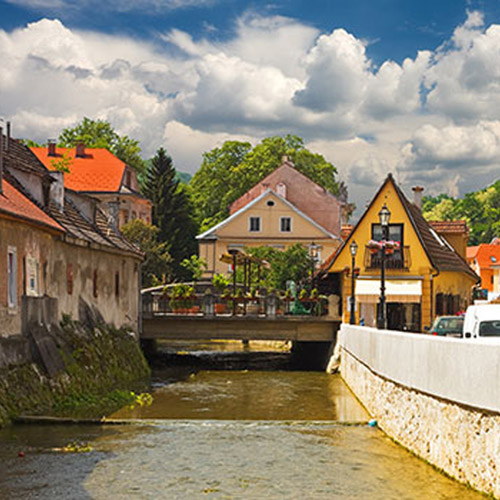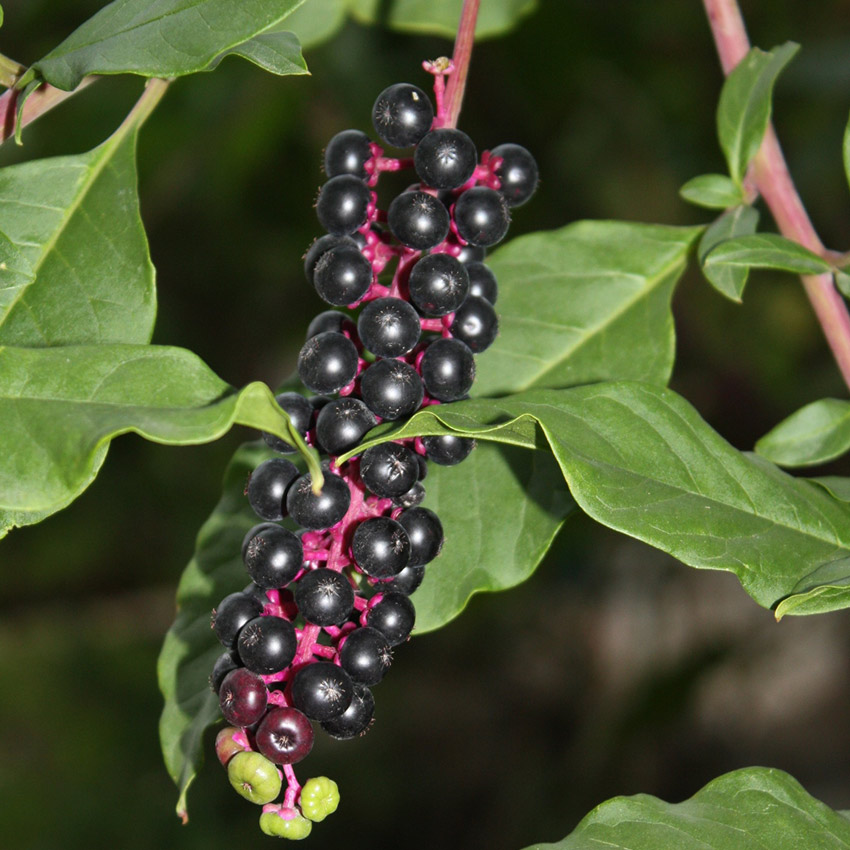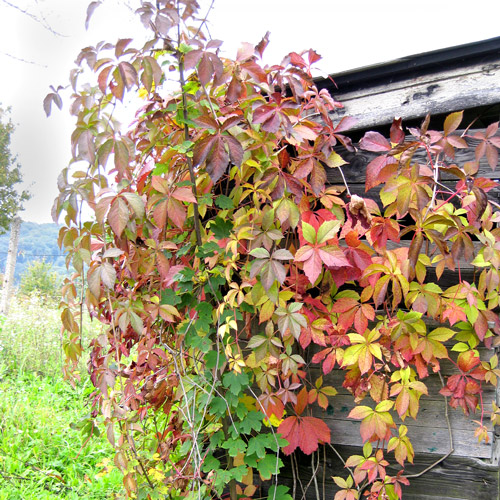

Croatia is an European country with unique geographical position situated on the border of three biogeographical regions (Mediterranean, Alpine and Continental). Due to wide spectrum of diverse ecological conditions on a relatively small area, it has very rich biodiversity. In Croatia Bioblitz will take place in seven areas of continental Croatia:
Krapina-Zagorje County
Krapina-Zagorje County is located in the northwestern part of the Republic of Croatia and belongs to the area of central Croatia. It is a separate geographical unit that stretches from the peaks of Macelj and Ivančica in the north to Medvednica in the southeast. The western border is the Sutla river, and the eastern border is the watershed of the Krapina and Lonja river basins. In the north, the county borders with the Republic of Slovenia and Varaždin County, in the west with the Republic of Slovenia, in the south with the city of Zagreb and Zagreb County, and in the east with Zagreb and Varaždin County. Krapina-Zagorje County includes 25 municipalities and 7 cities. Although the area is one of the smaller counties, it has 17 protected areas in four categories: nature park, natural monument, significant landscape and monument of park architecture. The surface of protected areas is 6522,01 ha and 5,3% of the area of the County is protected. 10% of the County's territory, i.e. six areas, is included in the Natura 2000 Ecological Network. The public institution manages protected parts of nature and ecological network areas in Krapina-Zagorje County by performing activities of protection, maintenance and promotion of protected areas to protect and preserve the originality of nature and sustainable use of natural resources. The public institution also supervises the implementation of conditions and measures for nature protection in the area it manages and participates in data collection in order to monitor nature conservation. One of our tasks is to protect nature from invasive species, as they are one of the greatest threats to the biodiversity of an area.

Lonjsko Polje Nature Park
Lonjsko Polje Nature Park is located along the middle course of the Sava River, along which there are traditional rural settlements with well-preserved traditional architecture in wood (oak) and the associated cultural landscape. Lonjsko Polje Nature Park is one of the largest and best-preserved natural floodplains in Europe. Every year the waters of the Sava River and its tributaries flow into Lonjsko, Poganovo and Mokro Fields. With such periodic flooding, the Nature Park is a unique treasure of biodiversity not only in Croatia, but also on the entire Old Continent. Almost 60% of the area is covered by floodplain riparian forests of pedunculate oak and black ash. When floodwaters recede into the Sava riverbed, wet grasslands become one of the last areas in Europe where traditional grazing has been preserved. There, cattle graze freely on large common pastures. This area is a habitat for more than two thirds of the total bird population in Croatia. Their stability depends on the preservation and integrity of large complexes of lowland floodplain forests and grasslands. The area is also one of the most important spawning site in the entire Danube Basin. Ecological processes and flood dynamics have shaped a specific way of traditional land use by creating a unique mosaic of anthropogenic and natural habitats important for the conservation of biological and landscape diversity. Despite the Institution's efforts to maintain habitats and promote traditional land use many invasive alien species (false-indigo bush, knotweeds, tree of haven, common milkweed, prickly cucumber, goldenroot) are a growing threat to the biodiversity of this rarely preserved floodplain in Europe.

Maksimir Park
Maksimir Park is a city park protected in the category of monuments of park architecture with an area of 356.21 ha. Almost half of Maksimir Park is covered with forests (47.0%), a tenth of the area is covered with meadows (10.73%), a slightly smaller area is mosaics of agricultural land (6.93), while the smallest area incloudes aquatic habitats (3.0%). Thanks to the diversity of habitats, Maksimir Park is home to many plant and animal species and is one of the most important areas of the City of Zagreb for the preservation of urban biodiversity. Over 900 different species of plants and animals have been recorded in Maksimir Park so far. Most of them are plant species (about 600), over 100 species of birds, 14 species of bats, 12 species of reptiles and amphibians and about 150 different species of insects, for which new research expects a much larger number. Among the many species that live in Maksimir Park, 89 of them are strictly protected. The greatest threat to urban biodiversity is the occurrence of invasive species. 41 invasive alien species have been recorded in Maksimir Park, of which 23 are plant species, 15 invertebrate species, 6 fish species and 1 turtle species. Of the 23 recorded invasive alien plant species in Maksimir Park, the most abundand are from the Asteraceae family with 34%, followed by Fabaceae and Balsaminaceae with with 8%. Taking into account the distribution, number of individuals and their presence in different habitat types, the serious threat to Maksimir biodiversity is represented by daisy fleabane (Erigeron annuus), black locust (Robinia pseudoacacia) and common ragweed (Ambrosia artemisiifolia).

Sisak - Moslavina County
Sisak - Moslavina County is located in the southern part of central Croatia and borders with five counties and on south with state Bosnia and Hercegovina. Sisak - Moslavina County’s surface is 4468 km2, which is about 7.9% of the land territory of Croatia. Number of residents in County is 140.549 with population density of 31,46 per km². Headquarter of the County is city Sisak. The County can be divided into 3 geographical parts, such as mountains, hills and flooding river valleys. Sisak - Moslavina County has 12 protected areas: Nature Park Lonjsko polje, special reserves Cret-Đon-Močvar, Dražiblato, Krapje đol i Rakita, Regional park Moslavačka gora, significant landscapes Odransko polje, Sunjsko polje, Petrova gora and Kotar stari gaj, forest Brdo Djed, Park architecture monument Strossmayerovo šetalište and also 20 Natura 2000 areas.This area is under the management of two institutions. County institution Zaštita prirode manages 9 protected areas and 20 Natura 2000 areas. The most common species of invasive alien plants and animals that can be found in this area are ragweed (Ambrosia artemisiifolia), false indigo (Amorpha fruticosa), commmon milkweed (Asclepias syriaca), pond slider (Trachemys scripta) and nutria (Myocastor coypus). National management plans for certain invasive alien species have recognized this threat and therefore have included a number of endangered sites in the County in invasive species removal programs.

Virovitica-Podravina County
Virovitica-Podravina County (VPC) has a total area of 2,024 km², 70.660 inhabitants, is located on the continental part of the Republic of Croatia, and is the geographical link between Slavonia and Podravina. The site of BioBlitz event is located along the Drava River in the area of the Natura 2000 Ecological Network (where Special areas of Conservation - SAC overlap with Special protection Areas for birds - SPA in accordance with the Directive on the Conservation of Wild Birds (Council Directive 79/409/EEC; 2009/147/EC) and the Directive on the Conservation of Natural Habitats and wildlife and flora (Council Directive 92/43/EEC)), habitat code HR1000015 Middle course of the Drava. Also, this rich area of biodiversity is part of the Mura-Drava Regional Park, which is the first regional park declared in Croatia. The Mura-Drava Regional Park is part of the Five-country BR Mura-Drava-Danube, which was declared on September 15, 2021 and is under UNESCO protection. This area is also part of the European Green Belt, which stretches through 24 European countries. Near the BioBlitz event is the Monument of park architecture - Group of trees in Noskovačka Dubrava where the Visitor Center Drava Story is located, which focuses on the interpretation of biodiversity, education of visitors and preservation of natural heritage. The public institution for management of protected parts of nature and the ecological network of VPC manages this area and staff of the public institution is regularly educated on invasive alien species. Some of identified invasive alien species in this area are Amorpha fruticosa, Asclepias syriaca and Phytolacca americana.

Town of Samobor
The town of Samobor is located in the northwestern part of continental Croatia (Zagreb County), on the eastern slopes of the Samobor Mountains, close to the Žumberak – Samoborsko gorje Nature Park. It is 25 kilometers away from the capital Zagreb, and 4 kilometers from neighbouring Slovenia, so it has a distinct traffic significance. The city covers a total area of around 250.7 km2. According to the 2015 census, it had a population of 37,728 citizens. Due to its vicinity to the capital, it is one of the most popular and oldest excursion area in continental Croatia, and is therefore under strong anthropogenic influence. The last extensive study of the invasive flora of the town of Samobor was conducted in 2016, and the number of invasive plants was 36 (5.29 per km2, 48% of the total number of IAS plants in Croatia). The most represented families to which the invasive plant species of the town of Samobor belonged were Asteraceae (13 taxa) and Poaceae (5 taxa). The most common species were Erigeron annuus, Conyza canadensis, Veronica persica and Ambrosia artemisiifolia. The spectrum of life forms was dominated by therophytes (58.05%), and the most invasive taxa were of American origin (62.90%). Invasive plants of the town of Samobor spread most often by anemochory (31.78%) and zoochory (16.10%). During the research, 24 different habitat types with invasive urban flora were found, and habitats with a larger number of recorded invasive species are: residential houses in a row with back gardens, single houses (29.32%) and yards and home gardens (26.09%). Bioblitz will be used for comparative comparison, further research and management of invasive plants in the town of Samobor.

Žumberak – Samoborsko gorje Nature Park
On 28 May 1999, the area of Žumberak and the Samobor hills was designated a Nature Park by a decision of the Croatian Parliament. This protected area is managed by the Public Institution "Nature Park Žumberak – Samoborsko gorje". It is a hilly and mountainous area with a total surface of 34,235 hectares. In terms of biological, landscape and geological diversity, the area of Žumberak and Samobor hills is one of the most valuable natural and cultural landscapes of the continental part of Croatia characterized by a unique mixture of forests and vast meadows that alternate with cultivated landscape. The area of the Nature Park is also a part of Natura 2000 ecological network with 23 target species and 14 target habitats. Today, unfortunately, in this protected area we can find many invasive alien species, especially plant species, which are primarily a threat to biodiversity, but also have negative impact on agriculture and human health. From 2016 to 2018, the staff of the Institution and external associates conducted an inventory of invasive plant species in the Park area. Some of the most commonly recorded species were Erigeron annuus (L.) Pers., Conyza canadensis (L.) Cronquist, Ambrosia artemisiifolia L., etc. A tree o heaven Ailanthus altissima (Mill.) Swingle has not been recorded within the boundaries of the Nature Park during that research. However, during 2019, reports were received from the field that this species had occured within the boundaries of the protected area. Our goal during the Alien CSI Bioblitz event is to search the Park area and determine the presence and distribution of this species within the boundaries of the protected area.

Species
How to participate
Joining the BioBlitz of invasive species in Croatia is very easy! Here are the main steps you may need:
1. Download the “Invazivne vrste u Hrvatskoj” app to your smartphone or tablet and create an account. You can download it freely from digital distribution services App Store and Google Play.
2. Participate in this event from 20th to 22nd May 2022 by recording data on invasive alien species and reporting it via the mobile application “Invazivne vrste u Hrvatskoj”
3. At 10 am on 20th May 2022 join us on one of the seven BioBlitz areas, where we will organize short field trainings by the staff of the Public Institution for Management of Protected Natural Values.
- Krapina-Zagorje County: the site near the A. Cesarec Elementary School (46.168305, 15.863093); transect of the Krapina River - August Cesarec Elementary School-Dolac Lake. For more information visit https://www.zagorje-priroda.hr/ or contact the Public Institution for Management of Protected Natural Values of Krapina-Zagorje County (email: info@zagorje-priroda.hr, phone: 049 315060, 091 3293356).
- Park Maksimir: start point on main path in Maksimir Park, near Gatekeepers house (45.820052, 16.016104); transect Gatekeepers house – Mogilska – Third lake. The students of elementary school Bukovac (eco group) with park ranger guide will participate in event together with all interested visitors. For more information visit https://www.park-maksimir.hr or contact the Public Institution Maksimir (email: lana.jelic@park-maksimir.hr, phone: 099 7077069).
- Nature Park Lonjsko polje: high school students from Sisak will inventory the knotweed along the Sava River from the Čigoč to Lonja Villages (45.390555, 16.682777). High school students from Kutina will inventory the common milkweed on to the northern embankment of the Lonjsko polje retention area south of the settlement of Repušnica (45.482222, 16.695833). For more information visit website https://pp-lonjsko-polje.hr/ or contact the Public Institution Nature Park Lonjsko polje (email: info@pp-lonjsko-polje.hr, phone: 044 672080)
- Žumberak-Samoborsko gorje Nature Park: within the boundaries of the Park the distribution of tree of heaven (Ailanthus altissima) will be reported. For more information visit https://www.pp-zumberak-samoborsko-gorje.hr/ or contact the Public Institution Žumberak – Samoborsko gorje Nature Park (email: park@pp-zumberak-samoborsko-gorje.hr, phone: 01 3327660).
- Sisak-Moslavina County: the starting point on city’s public beach on the Natura 2000 site HR2000642 Kupa (45.477115, 16.359558) on the 2,7 km long dike, which stretches out from the Sisak city’s public beach till the “Thunder Bridge”. For more information visit https://zastita-prirode-smz.hr/ or contact Public Institution for Management of Protected Natural Values of Sisak-Moslavina County (email: jupriroda.smz@sk.t-com.hr, phone: 044 679122)
- Virovitica-Podravina County: the site near Drava River located in the Natura 2000 Ecological Network HR1000015 Middle course of the Drava, on the location along the embankment, poplar forest area (45.81676, 17.74612). For more information visit http://virovitica-nature.hr/ or contact the Public institution for management of protected parts of nature and the ecological network of Virovitica-Podravina County (email: info@virovitica-nature.hr, phone: 033 722033)
- Town of Samobor: students of the sixth and eighth grades from the Elementary School Bogumil Toni (with the permission of the director Milena Kolarec, professor) will inventory all invasive plants in the town of Samobor in an area of about km² . For more information visit www.invazivnevrste.hr or contact Božena Mitić (email: bozena.mitic@biol.pmf.hr, tel: 091 5360661).
4. We encourage you to continue documenting invasive alien species after the BioBlitz event using mobile application “Invazivne vrste u Hrvatskoj” and thus contribute to increasing knowledge about invasive alien species in Croatia. For more information on invasive alien species in Croatia visit www.invazivnevrste.hr.
Resources
- Nikolić T., Mitić B., Boršić I. (2014): Flora Hrvatske: Invazivne biljke. Alfa d.d., Zagreb.
- Institute for Environment and Nature, Ministry of Economy and Sustainable Development – Invazivne strane vrste: https://invazivnevrste.hr/
- Flora Croatica Database
- Invazivne strane biljne vrste Grada Zagreba
- Invazivne biljne vrste i mogućnosti uklanjanja
Acknowledgements
Ambassadors for the implementation of the Bioblitz event in Croatia are Dinka Matošević, (Croatian Forest Research Institute, Jastrebarsko) and Božena Mitić (University of Zagreb, Faculty of Science, Department of Biology).
Coordinators for the implementation of the Bioblitz event on the national level are Petra Kutleša and Igor Boršić (Institute for Environment and Nature, Ministry of Economy and Sustainable Development).
On regional level, public institutions for the management of protected natural values organize BioBlitz event as follows:
- The Public institution for the management of protected parts of nature of Krapina-Zagorje County in the area of Krapina-Zagorje County
- The Public Institution “Žumberak – Samoborsko gorje Nature Park” in the area of Nature Park Žumberak – Samoborsko gorje
- The Public Institution Maksimir in the area of Maksimir Park
- The Public Institution “Lonjsko polje Nature Park” in the area of Nature Park Lonjsko Polje
- The County institution for the management of protected parts of nature of Sisak-Moslavina County in the area of Sisak-Moslavina County
- The Public institution for the management of protected parts of nature and the ecological network of Virovitica-Podravina County in the area of Virovitica-Podravina County
Bioblitz event in the area of the town of Samobor is organized by Božena Mitić (University of Zagreb, Faculty of Science, Department of Biology) and Diana Vlahović (Elementary School Bogumil Toni, Samobor).









